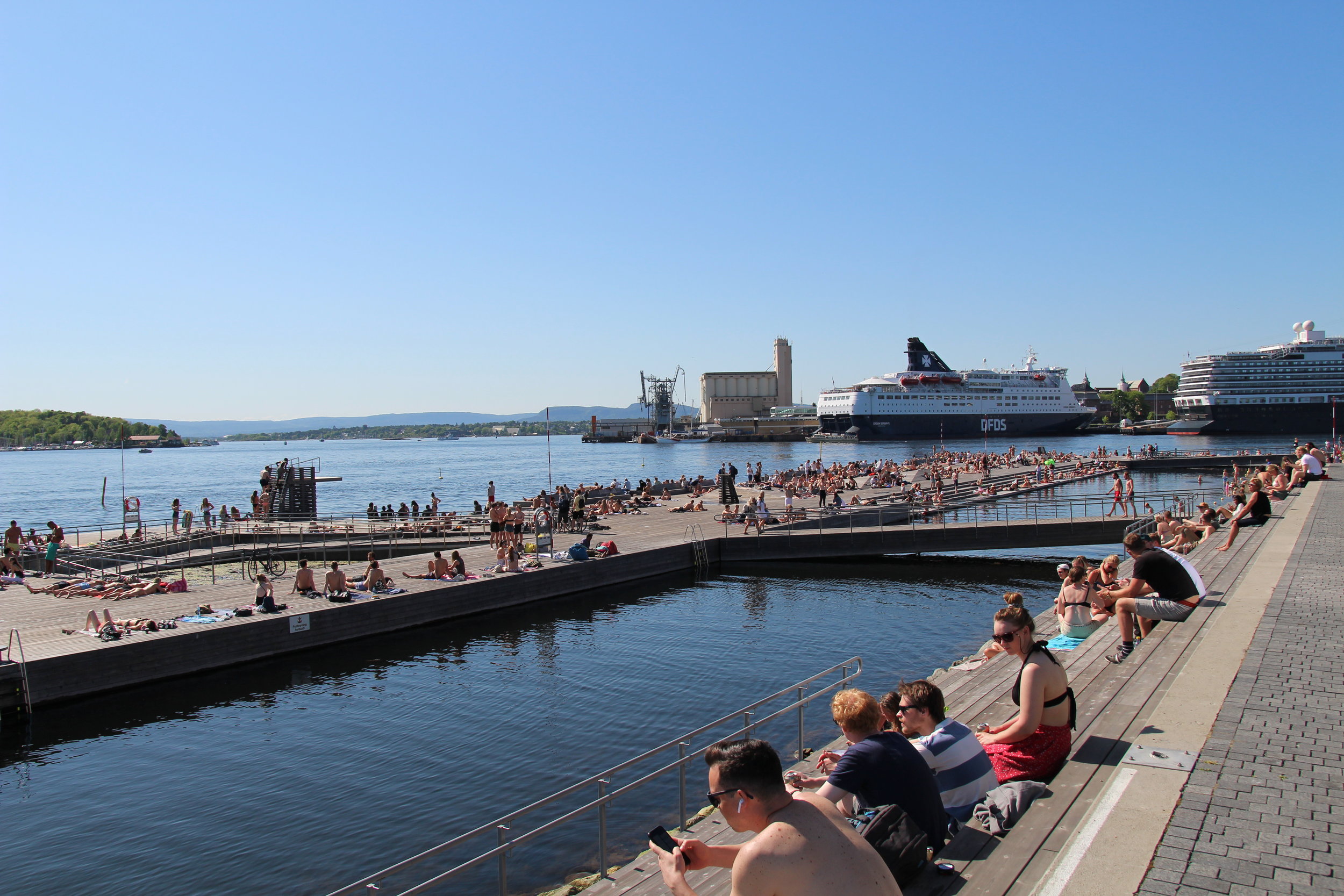Text by: Tina Lam
Photo by: Ingjerd Sandven Kleivan and Joran van Schaik
They say that the future wars and conflicts will be about water. Battles will be fought over a valuable and vital resource due to the decreasing levels of it. Water in itself has no nutrients such as vitamins, yet it is essential for all lives. We spend billions in the search for it when we venture out in space - we depend on water in order to exist. Despite this dependency, we seem to take it for granted. We flush it down the drain daily, we use it to water our lawns and we use vast quantities of it in industries. Is the ubiquity of water causing us to manage it so callously?
One practice who is currently working on the topic of water and climate change, is White Arkitekter - an interdisciplinary practice within architecture, urban development, landscape architecture and interior design. In an office hidden in central Oslo, I meet Kjetil Olai Torgrimsby, a landscape architect and Rebekah Schaberg, an architect and urban planner to talk about water and urban planning, which also happens to be the topic of the studio’s new book. On one of the walls I see a big white map where all the rivers in Oslo are marked out. They look like veins.
So why the topic water? According to Rebekah Schaberg, it was not just because water is an interesting and important topic in itself, but there was a need to address the theme in a more comprehensive way. Schaberg points out: “in our field, we have a tendency of treating water from two points of view: It is either water as a technical element or water as a social element. With this book, we wanted to bridge those two narratives, but also look at water in a more holistic manner by hearing stories from far-reaching contexts’. The plan they say, is to make an anthology – “stories about water” is part one. I get to have a sneak peak of “Out of the Blue – A blue perspective on the new reality of climate change”, which at that moment was still unfinished. On the question of what kind of book this is, Rebekah specified that this is not a “White book” or “the architects believe…”-book. White is merely the organizer and editor of this book she points out. They have compiled case studies about water from all over the world, from Manila to Florida.
Water for those of us who lives in places where it makes no big presence of itself in the means of extremity, is not a subject we concern ourselves with so much. It is not perceived as a grave issue. Although we all got a taste of a possible disastrous future last summer. Residents in several cities were told to use water sparingly due to drought and extreme heat. The swimming sessions at the fjords that summer was done with a sense of unease lurking in the back of our minds. However, water for those who experience it in extreme means, it is about decay, life and death. Water can be a problem when it is too much of it, such as floods and it can be problematic when there is too little of it, such as drought. The book highlights the many different problems concerning water in urban planning from different professional perspectives and locations.
After a misunderstanding about where we should meet with another member of White, we all rush down to SALT to meet Ingjerd Sandven Kleivan, the graphic designer at White Arkitekter Oslo. On the way down, we talked more about water. Both of us had read the report from NVE (Norges Vassdrag- og energidirektorat) about the decreasing levels of groundwater and we are uneased by it. An unusual and worrying phenomenon due to the time stamp. Normally it should not be this low due to the melting of ice and snow. The sense of urgency makes the case for cities to start treating water better, to treat it as if our lives depended on it. Step one is to manage water in a cyclical manner, as it is done in nature. This requires interdisciplinary cooperation of dimensions. Thus the importance of practices who already work like this such as White.
The book´s contributors are from various professions within planning: architects, urbanists, landscape architects and civil engineers. The interdisciplinary style of the practice is reflected in this book, or as Kjetil said “we get better results when we work together across disciplines. It just makes sense to work like this”. There seems to be a shift now in how architect/planning practices work. The realization that one has to look outside one´s own field in order to find new solutions, especially concerning climate change.
The rendezvous at SALT isn’t just so we can observe water in urban development, it is also the site of the book launch on 21th of May. During the book launch there will also be a discussion session with some of the contributors such as Øystein Grønning. The event is free, but you have to book yourself a seat, but hurry as the seats are quite popular. I leave White at SALT, as I am walking towards Central Station, looking at Bjørvika, thinking about how I almost don’t remember how the ocean smells like anymore.


